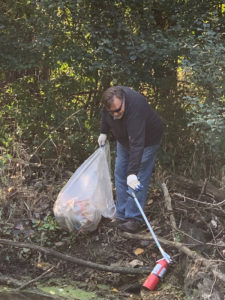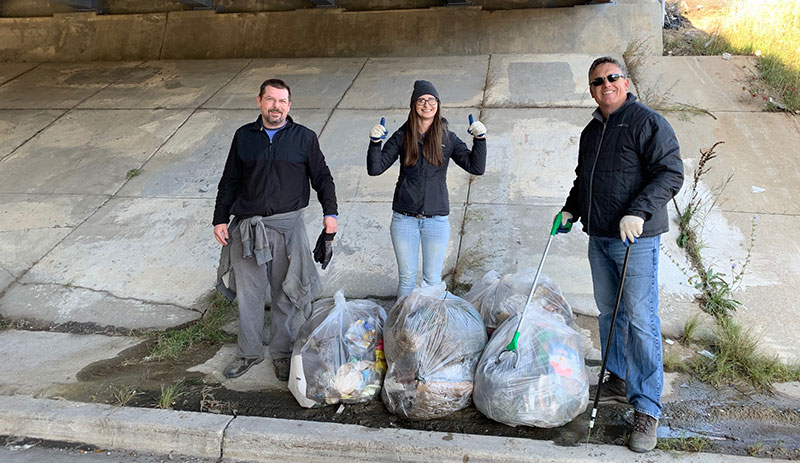by Nancy Cates, contributing writer
Plastics Business
When Derrill Rice was selected as president and chief executive officer at Plastic Components, Inc., he and the leadership team agreed that company culture was a key element in the hiring decision.
Rice, who began his career as a front-line supervisor in a textile plant, had led six organizations in five industries in North America, Europe and Asia. “Company culture,” he said, “is a key factor in determining success potential across so many aspects of a business. And, a shared company culture – or the lack thereof – will influence everything from customer satisfaction to employee engagement.”
PCI had gone through a recapitalization process with Morgenthaler Private Equity (MPE) Partners in 2017 and, after 28 years in business, a new leader was sought for the Germantown, Wisconsin-based company.
Throughout the transition in corporate structure and management, Wendi Jay, PCI’s human resources manager, said that maintaining the culture was viewed as essential. “I have been with PCI for 21 years and have been here to see it grow in every way. Some growth spurts are harder than others, but we have always had a really committed team, and we have protected our culture at all costs. We take each addition to the team very seriously.”
“The key for the PCI team, and for me,” Rice explained, “was ensuring that I was the right culture fit. The PCI team decided that the best way to get to know me outside of the interview chair was to join them for a dinner and attend the PCI softball league game … which included an informal interview with Wendi’s two daughters. We had a great evening and a ton of laughter and cheering. I left excited about the potential fit.”
Jay explained that PCI uses a personality profile questionnaire when assessing new candidates and works to match people with their strengths. “If we set them up to succeed, we all benefit. Being lean means everyone needs to do their part. You won’t get away with slacking in the corner at PCI, because your peers will hold you accountable.”
PCI develops a profile for every position, Jay explained. “I developed the profile for the CEO – and Derrill hit every single point on the dot.”
Rice said he saw value in the transparency and get-it-done attitude of the PCI leadership team. “There is a high level of engagement, commitment and passion for what is done here. There is mutual respect and appreciation. I think our core values can sum up what’s most important: integrity, innovation, teamwork and accountability. And – at the same time – having fun while we get the job done!”
Valuing the culture from sale to new CEO
 Jay and three other leadership team members — Gene Mussel, operations manager; Rick Riesterer, business development manager; and Kurt Behrendt, engineering manager — were involved in the sale process, she explained. “We took the opportunity to be part of it very seriously. It was important to us to pick a partner that would recognize the culture we had and how important it was to our success. The entire team unanimously chose MPE because they saw the value in our culture rather than just the value in our bottom line.”
Jay and three other leadership team members — Gene Mussel, operations manager; Rick Riesterer, business development manager; and Kurt Behrendt, engineering manager — were involved in the sale process, she explained. “We took the opportunity to be part of it very seriously. It was important to us to pick a partner that would recognize the culture we had and how important it was to our success. The entire team unanimously chose MPE because they saw the value in our culture rather than just the value in our bottom line.”
From Rice’s perspective, the entire leadership team needed to be involved in continuing and establishing the company’s culture going forward, he said, “but the tone and character of a company starts at the top. I have some options: I can lead with humility, dedication and appreciation – or I can lead by dictating, demanding and controlling. Each will foster a different company culture. I can focus on strategy and trust the team to deal with the daily challenges, or I can micromanage all aspects of the business. Again, each approach will foster a different company culture. It was important for all of us to be team members going forward.”
After one week on the job, Rice guided the management team in a day-long, offsite brainstorming session/SWOT analysis. He said the goal was to review and refine PCI’s vision and core values and begin to discuss the future strategy to maintain and create value within a culture that is engaged and inclusive.
Despite the uncertainty that can accompany change, employment remained stable, Jay said. “I am proud to say we didn’t lose a single employee due to the transition. We communicated with all employees that the management team was part of the decision process in choosing our new owner and that we would all be staying onboard. We stressed that we looked at it as a new partnership, and we were excited about it. When the first new molding press arrived after the sale, I think there was a collective sigh of relief. That continued investment of capital equipment in PCI provided a great deal of comfort for our employees: They could tangibly see MPE’s commitment to help us grow.”
When Rice came onboard, he set a theme of transparency, communication and appreciation, he said. “We began by establishing the basics of employee engagement: town hall meetings, newsletters, service awards and a company-wide incentive compensation program based on management- and board-approved key performance indicators. And I, personally, engage in plant cookouts as head chef across all shifts. We hold lunch-and-learn events, meetings and similar activities. Then we back all that up by delivering on our commitments.
“We have company, department and individual goals as part of our annual review process,” Rice continued. “Tools like that ensure that the employee and supervisor are in regular communication, which helps retain employees. Along with supervisor training, spot bonuses and financial support for continuing education opportunities, it provides an environment that shows an effort to appreciate people’s work.”
Fine-tuning for greater success
 Since the acquisition, Jay said, some things have changed, including higher emphasis on sticking to internal budgets and developing quarterly reports for the board of directors. “We also are much more open about financials,” she said, “and we have included every employee in the incentive compensation plan. We all win – or lose – together, and that strengthens the culture considerably. It is fun to see employees company-wide watching the financial metrics board in the plant and knowing each and every one of them play a part in their own success.”
Since the acquisition, Jay said, some things have changed, including higher emphasis on sticking to internal budgets and developing quarterly reports for the board of directors. “We also are much more open about financials,” she said, “and we have included every employee in the incentive compensation plan. We all win – or lose – together, and that strengthens the culture considerably. It is fun to see employees company-wide watching the financial metrics board in the plant and knowing each and every one of them play a part in their own success.”
For most employees, Jay explained, the transition was smooth. “In many ways, for the average employee, there wasn’t any turmoil. Everyone continued executing in their jobs and didn’t notice much change. The leadership team was afforded more autonomy and learned to support each other – and even have healthy conflict – to discuss and resolve issues.”
Rice noted that expectations for the leadership team have increased. In sales, for example, he said the basic expectation had been to “go out and sell. Now the sales and marketing leader has to put together a forecast; explain how he sells, what he’s going to sell and when he is going to sell it; and be held accountable for those forecasts. It was a lot of change for the leadership team, in terms of moving from an individual owner to more institutional ownership. I think everybody on the team accepted it as a learning and growing experience.”
Over nearly three decades, PCI has invested in expanding, automating and adding facilities. Process control capabilities have been added, patents for lights-out manufacturing have been awarded and a fully automated facility has been operating in Germantown since 2011.
“We definitely need a more skilled workforce than we did 10 years ago,” Jay said. “It’s not as easy to bring someone off the street and train them. The relationships we have built with both Ferris State and the University of Wisconsin-Stout have been advantageous in helping us find skilled engineers and interns. Students always are very excited to hear about and potentially get to see our lights-out facility.”
The use of PCI’s position profiles ensures that new hires understand and fit the company culture, Jay continued, with personality profile questionnaires intended to highlight each candidate’s strengths to fit position requirements. She said that new employees right out of college come ready to learn and become part of the team. “They want to offer something,” she said, “and it’s important to embrace their ideas, listen and consider their challenges to what might be more traditional approaches. Also, PCI is working on an onboarding video to prepare new hires for their first day on the job.
“We also have made considerable investments to continually educate and elevate our technical staff,” she explained. “Ten years ago, we didn’t have a master molder; today, we have six. We continue to seek out employees who would be good fits for the local apprenticeship program as well. We maintain the thought process that there always is a way to do it better, and the checkbook for technology is open, prompting employees to seek new ways and methods.”
PCI’s early 2019 acquisition of Syracuse Plastics of North Carolina (SPNC), in Cary, continued the expansion and accompanying changes. Ensuring a cultural fit was a key aspect of the acquisition, Rice said. “After the deal was closed, we initiated the same ‘communication, transparency and appreciation’ initiatives,” he explained. “But, I was most impressed with the level of engagement and partnership by the leadership teams of both PCI and SPNC across every function. We are truly learning from and helping each other. Transitions never happen overnight, but we are working down the path of having not a ‘north’ and ‘south’ company culture, but one PCI company culture.”
Jay continued, “We told the team at SPNC from day one: We don’t have all the answers. In many cases, they may have a better process or philosophy. I think that made them more open to our synergies and more comfortable that we wouldn’t dictate the ‘PCI way.’ The key is having teams that are willing to learn and grow. The PCI team has grown immensely under Derrill’s leadership because we were willing to learn, change and grow.”
Rice concluded, “Corporate culture itself can be one that enables, supports and encourages diversity and inclusion. It encourages people to speak up. It’s not limiting. It does not stifle opinions. It moves a company forward, gets a broad range of ideas to the table and drives innovation.”





